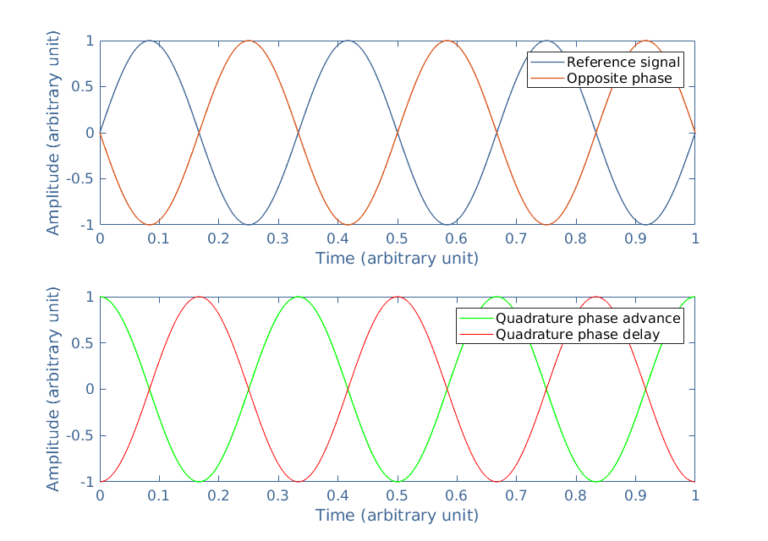

In particular, the K band phase shifter employs a classical transversal clamped-clamped switch topology.
Phase shifter vs simple delay series#
Concerning reconfigurability, we opted for 4 stages (i.e., 16 configurations), controlled by electrostatically driven ohmic series RF-MEMS micro-relays. Given the field of application mentioned above, we tailored the design of the network in such a way to have the center frequency of operation at 19.5 GHz and 29.3 GHz, i.e., in the K and Ka band, respectively. From the architectural point of view, we relied on the True-Time Delay (TTD) topology, which is well-known in the literature. In light of this scenario, this work presents and discusses a couple of design concepts of RF-MEMS-based reconfigurable phase shifters. Conventionally, signal reception and transmission are carried out through two separate frequency channels in the K and Ka frequency bands, which, in turn, increase the demand for the high-performance components intended for signal control of the transceiver modules. Satellite systems providing high-speed Internet connectivity utilize K and Ka frequency bands offering a large bandwidth compared to lower frequencies. īesides the abovementioned case, another intriguing application field for high-performance RF-MEMS is gaining shape, which is the upcoming fifth generation of mobile communications, i.e., 5G, with all its implications and spillovers in the Internet of Things (IoT) scenario.Īctive development of 5G technologies and satellite communications demand for high-speed stable data transfer services from any location. Moreover, the spread of RF-MEMS-based reconfigurable passive networks in the consumer segment is pulling applied research and engineering of other components based on Microsystem technology, with robust switches and switching units first in line. Analog impedance matching tuners based on RF-MEMS technology were the first in line solution available, which made possible solving the problem, and, on the other hand, to score the first successful exploitation of RF-MEMS in mass-market applications. The increasing integration of devices in the handsets led to a progressive worsening of the quality of communications. ĭespite the initial market expectations of RF-MEMS were disappointed, the context started to change quite radically after 2010 when smartphones started to become increasingly more popular. First discussed in scientific papers after the mid-1990s, MEMS-based RF passives quickly ignited huge expectations in terms of market breakthroughs, primarily because of their remarkable and unprecedented electromagnetic characteristics, like wideband operability, large reconfigurability/tunability, very-low loss, high-isolation, high Q-factor. RF-MEMS, i.e., Micro-Electro-Mechanical Systems (MEMS) for Radio Frequency (RF) applications have been around for a long time. However, such a non-ideality has a technological motivation that is explained in the paper and that will be fixed in the manufacturing of future devices. The simulated phase shifts at both the operating bands fit well the measured value, despite the measured losses (S21) are larger than 5–7 dB if compared to simulations.

The proposed phase shifters are realized in a surface micromachining RF-MEMS technology and the experimentally measured parameters are compared with Finite Element Method (FEM) multi-physical electromechanical and RF simulations. The networks feature 4 switchable stages (16 states) and are developed for the K and Ka bands.

This paper focuses on two design concepts of multi-state phase shifter designed and manufactured in RF-MEMS technology. In particular, satellite communication systems providing high-speed Internet connectivity utilize the K and Ka bands, which offer larger bandwidth compared to lower frequencies. RF-MEMS, i.e., Micro-Electro-Mechanical Systems (MEMS) for Radio Frequency (RF) passive components, exhibit interesting characteristics for the upcoming 5G and Internet of Things (IoT) scenarios, in which reconfigurable broadband and frequency-agile devices, like high-order switching units, tunable filters, multi-state attenuators, and phase shifters will be necessary to enable mm-Wave services, small cells, and advanced beamforming.


 0 kommentar(er)
0 kommentar(er)
